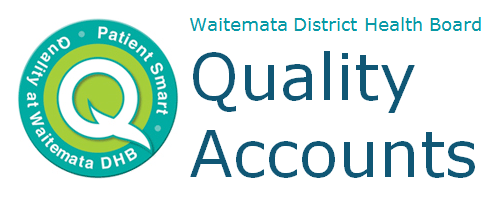
Opioids (eg morphine, codeine, and oxycodone) are an important group of medicines used to manage pain. The safe use of opioids is essential to ensure patients do not suffer needlessly from harm such as uncontrolled pain or side effects (eg constipation, nausea, vomiting and oversedation).
The safe use of opioids to achieve effective pain management is important for enhancing recovery from injury, surgery and illness.
Safe Use of Opioids Collaborative
In partnership between Waitemata DHB and the Health Quality and Safety Commission (HQSC), the 'Safe Use of Opioids Collaborative' is a national project to reduce harm related to opioids in New Zealand public hospitals.
Throughthis collaborative we have found that there was no clear and standardised pathway on the appropriate assessment, management and monitoring of pain. Our consumers told us and the result of pain management audits in a surgical ward found that:
- pain was not being regularly assessed and documented
- life threatening side effects of opioids (especially after the use of patient controlled analgesia (PCA)) were not monitored as regularly as it could have been
- regularly prescribed pain relief medicines were not always administered
- some patients experienced inadequate pain control
- some patients who experienced pain were not offered analgesia in a timely manner
What are we trying to achieve?
With a view to enhancing the patient’s experience of pain management and reducing uncontrolled pain we aimed to:
- Develop a comprehensive and foundational pain management resource which offers clear guidance on how to appropriately monitor and manage pain
- Improve the routine monitoring of pain
- Improve the monitoring of life threatening side effects when PCA’s were used
- Ensure regularly prescribed pain relief medicines were always administered
- Ensure patients are offered additional analgesia when in pain
- Improve overall patients’ experiences of pain management
What have we done?
Our team have:
- Developed and published a comprehensive and foundational educational resource to provide staff with clear guidance on how to appropriately manage pain and prescribe, use and monitor opioids in a safe and timely manner.
- Updated existing hospital policies on the expectations for monitoring of life-threatening complications post-opioid use
- Provided educational sessions for ward nurses on how to manage pain and monitor side effects to ward nursing staff
- Initiated a programme where junior medical doctors regularly attend Pain Team ward rounds with our pain management specialists to learn how to assess and manage pain better
- Incorporated pain management standards which are aligned and consistent with the Patient and Whanau Care Standards Programme
- Co-designed with our consumers and staff a “Speak Up” patient information leaflet and process which encourages conversations about pain and opioid side effects
What can you do to help us?
It is OK to ask for help! Speak Up when you are in pain or if you experience side effects from your medicines.
It is easier to manage pain and side effects early. Let us know so we can help you more effectively manage and control your pain and side effects from medicines.
Did we make a Difference?
Ward audits on pain management between 09 Feb 15 to 14 Mar 16 (n=117 patients) showed:
- The routine monitoring of pain has improved from 9% to 46% (median)

- The monitoring of life threatening side effects when PCAs were used has improved from 0% to 57% (median)

- The routine administration of regularly prescribed pain relief medicines has improved from 16% to 55% (median)

- The routine offering of additional pain relief medicines when the patient is in pain has improved from 40% to 80% (median)

Despite improvements in the monitoring and management of pain and encouraging staff to have meaningful conversations with patients about their pain and side effects:
- The overall rate of uncontrolled pain remains relatively unchanged from 13% to 16% (median)

- The overall experience of pain management remain relatively unchanged from 90% to 87%

Where to from here?
Even though the Safe Use of Opioids Collaborative drew to a close in mid-2016, we will continue to work with our consumers and clinicians to improve better pain management and experiences of care.
For example, we have:
- incorporated the lessons from the Safe Use of Opioid project into:
- the electronic vital signs monitoring (eVitals) project –pain scores and other monitoring parameters necessary for safe opioid use now mandated data fields
- the electronic prescribing and administration (ePA) project (eg development of pain management pre-set orders for faster prescribing, co-prescribing of medicines which can be used to manage opioid side effects)
- started planning for further roll out of iPad Patient Entertainment Units
- started exploring how pain management plans can be routinely captured in electronic discharge summaries
- as part of Patient Safety Week 2017, looking into how we can more effectively encourage patients to speak up and ask about their medicines; especially for our Maori, Pacific and Asian patients
References
- Kerrisk L, Richardson S, Johnston S; Safe Use of Opioids Collaborative, ward pain management audit; 2015


